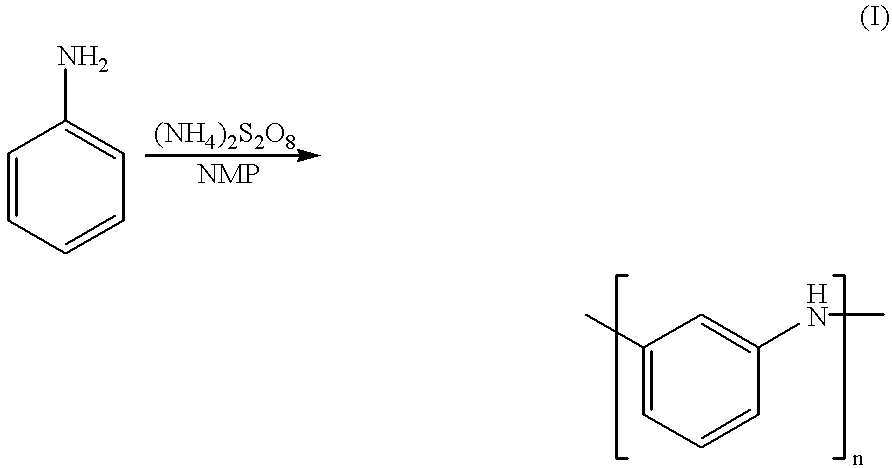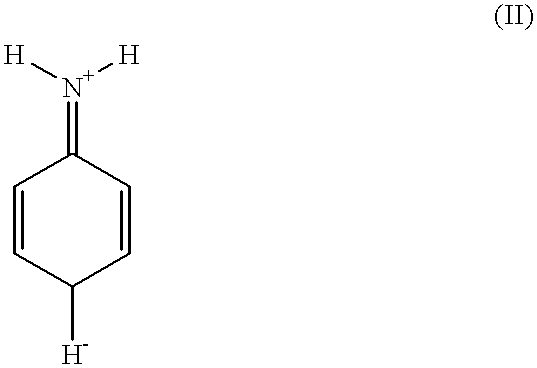Method for producing meta type polyaniline
a polyaniline and polymer technology, applied in the field of new materials, can solve the problems of inability to use solid polymer electrolyte membranes for fuel cells, inability to eliminate dopants such as inorganic acids in an atmosphere, and inability to prevent catalyst poisoning, etc., to achieve excellent proton conductivity and methanol barrier properties, prevent catalyst poisoning, and reduce catalytic activity
- Summary
- Abstract
- Description
- Claims
- Application Information
AI Technical Summary
Benefits of technology
Problems solved by technology
Method used
Image
Examples
example 2
A meta type polyaniline was obtained in the same manner as with Example 1 with the exception that ammonium peroxodisulfate was added for 6 hours. The resulting meta type polyaniline had a inherent viscosity .eta..sub.inh of 0.07. As to the bonding of aromatic rings in repeating units of the above-mentioned polyaniline, 85 mole percent of the aromatic rings were bonded at the meta-positions.
example 3
A meta type polyaniline was obtained in the same manner as with Example 1 with the exception that ammonium peroxodisulfate was added all at once. The resulting meta type polyaniline had a inherent viscosity .eta..sub.inh of 0.13. As to the bonding of aromatic rings in repeating units of the above-mentioned polyaniline, 81 mole percent of the aromatic rings were bonded at the meta-positions.
example 4
A meta type polyaniline was obtained in the same manner as with Example 1 with the exception that 124 ml of NMP was used. The resulting meta type polyaniline had a inherent viscosity .eta..sub.inh of 1.14. As to the bonding of aromatic rings in repeating units of the above-mentioned polyaniline, 81 mole percent of the aromatic rings were bonded at the meta-positions.
PUM
| Property | Measurement | Unit |
|---|---|---|
| Temperature | aaaaa | aaaaa |
| Temperature | aaaaa | aaaaa |
| Angle | aaaaa | aaaaa |
Abstract
Description
Claims
Application Information
 Login to View More
Login to View More - R&D
- Intellectual Property
- Life Sciences
- Materials
- Tech Scout
- Unparalleled Data Quality
- Higher Quality Content
- 60% Fewer Hallucinations
Browse by: Latest US Patents, China's latest patents, Technical Efficacy Thesaurus, Application Domain, Technology Topic, Popular Technical Reports.
© 2025 PatSnap. All rights reserved.Legal|Privacy policy|Modern Slavery Act Transparency Statement|Sitemap|About US| Contact US: help@patsnap.com



